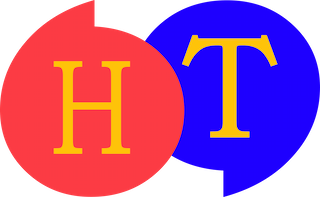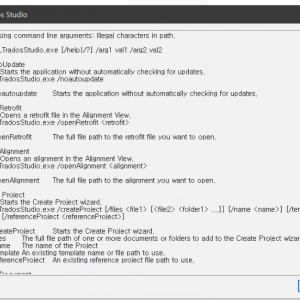In the previous post, I provided an overview of the CAT tool market and Trados’ place in it. In this post, I will discuss online CAT tools.
Online CAT tools are quite incredible. Before we discuss them further, though, you must understand that agencies own online CAT tools, not translators. Let’s make a comparison. A company purchases an expensive machine and installs it in their factory. The company learns how to use the machine and creates a manual. Workers come in every morning and work around the machine and return home in the evening. Sound familiar?

A translator is an independent entrepreneur who takes responsibility for his or her own production. If they had to work in the scenario above, however, the translator would become an employee again. Of course, the translator will not physically go into the office every morning; the translator will login via a host in Germany, for example at home, to access the CAT tool.
This method can be appealing in its own way.
1. I sometimes imagine a world where everything is connected via the Internet. In this world, I can connect instantly to a platform with just a small handheld device to begin translating regardless of where I am… I’d be able to translate lying down on a rock at the top of a mountain with only my smartphone. I wouldn’t need to install CAT tools in my equipment. A wireless Internet connection is all I need; the online CAT tool will provide all the functions. Such a world does not exist yet, but online CAT tools give us a sneak peek.
2. Another advantage is that translators don’t need to spend several hundred to over a thousand dollars. (Well, translators will have to buy their own software eventually as long as online CAT tools don’t exist universally.)
For these reasons above, online platforms are becoming more and more common.
The most well-known online CAT tool is XTM. XTM may be unstable at times depending on the hosting agency, but it’s alright to use. Other similar online CAT tools are popping up in the market all the time, but from my experience, they aren’t that much different from XTM (pros and cons both included).
But, I don’t like using online CAT tools. I already posted about this when I discussed TM ownership, but I will reorganize my points again here.
1. When we use online CAT tools, the agency takes the lead in the translation work, not the translator. Agencies were the translator’s marketing department, but now the translator becomes an employee of the agency. The translator receives all sorts of orders from the agency and has to learn how to use their equipment, etc.
2. Things become more inconvenient for the translator when agencies control the translation project. Tasks such as combining or splitting segments can be done properly only by a translator who knows both languages, but online CAT tools do not allow the translator to do this. The translator also has to use TMs made by someone else, which can feel like walking in someone else’s shoes.
3. Ownership of TM is most important. I’ve stressed repeatedly that time is the most crucial asset for translators. The longer we translate, the stronger the intellectual muscle in our brain that allows us to work grows. But how will a person store all the information that keeps growing? Even computers need external hard drives to store extra memory, and a person’s memory cannot compare to that of a computer’s. Thus, it’s a good idea to outsource memory storage. Returning to the main point, by saving the TM after a project is complete on a translator’s computer, the translator does not have to re-translate similar phrases or sentences. For full-time translators, TMs are crucial. TMs are the reason why translators produce better work as they gain more experience. A translator’s efficiency will improve only when he or she is allowed to own TM.
For these reasons, I don’t think it’s a good idea for translators to work with online CAT tools in the long term. Several years ago, I parted ways with an agency I had received a lot of work from for three years for these reasons. Our parting was amicable, of course. We worked very well together and the projects were interesting, but I could not give up TMs and the agency could not give up XTM, their online CAT tool system.
Some (good) agencies give translators a choice, perhaps because they are aware of translators’ point of view and dislike for online CAT tools. One agency I currently work for has allowed me to use my own CAT tool even though they are operating a system that uses XTM. As a result, I can build up my TM. After a job is completed, I send them the translated file and the .tmx file. The agency won’t use the .tmx file for translation work, but they will use it to calculate the rate of segment repetition. (I will explain what this is in a later post, as it is quite important.)
In conclusion, I think it’s a lot more beneficial in the long run to purchase a CAT tool of your choice, though it may be a financial burden at first.








